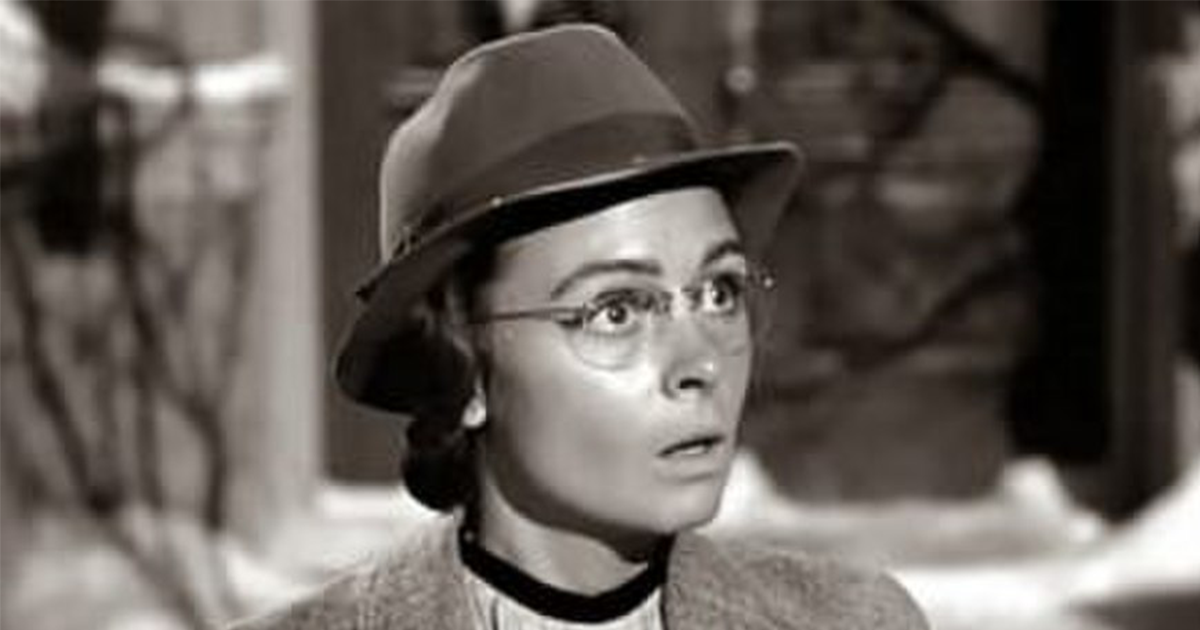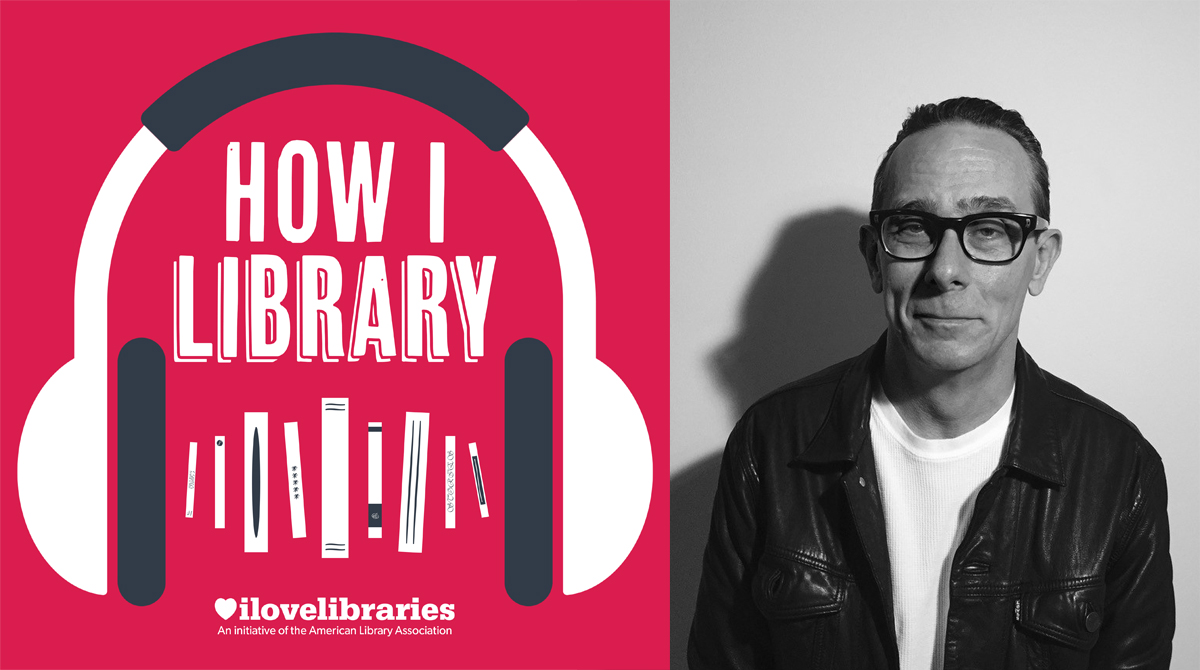by Jennifer Snoek-Brown, the real librarian behind Reel Librarians
Jennifer Snoek-Brown is an academic librarian in Washington state. She wrote an undergraduate honors thesis in 2001 called “A Glimpse Through the Glasses: Portrayals of Librarians in Film” and has continued analyzing the image of librarians in movies ever since. In 2011, Jennifer launched the website and blog, Reel Librarians, for which she writes and publishes twice-monthly posts. Here, she tells I Love Libraries about her favorite (and least favorite!) librarian portrayals in media.
What are some things Hollywood gets wrong in its portrayal of libraries and librarians?
This is something that I’ve been thinking about since childhood. My mother is a (retired) K-12 school librarian, and when I was quite young, she went back to school as a working mother to earn her master’s degree in library science. I have vivid memories of her graduation ceremony, and how she then transformed our school library; therefore, I intrinsically understood the value of that library science degree. One of my favorite films growing up was the 1946 classic, It’s a Wonderful Life—but I would look at how (spoiler!) Donna Reed’s character, Mary, became a spinster librarian in that film, and then I would look at my mother and know that something didn’t add up. I knew that Hollywood was getting it wrong. But not everyone is so lucky to have a librarian role model that up close and personal in their lives!
I also frequently rail and wail on my blog about how often films and TV shows get library call numbers wrong! They mix up Library of Congress and Dewey Decimal call numbers together, they include books without call number stickers in a library set (major pet peeve!), they get call number clues wrong…you name it! I wrote a lengthy blog post about this, “The good, the bad, and the misshelved,” in which I go into more detail of how and when movies get call numbers right, when they get them wrong, and when they give up.
What are some things Hollywood gets right in its portrayal of libraries and librarians?
I think Hollywood does sometimes get right the usefulness, trustworthiness, and purpose of librarians. Reel librarians, even in cameo roles, often are used as shortcuts to propel the plot forward. Let’s say a character needs a vital bit of information: where do they go? The library, of course! The audience then trusts when a librarian provides that information. That only works, in my opinion, because the public generally trusts librarians in real life. This ties into a concept called “existence value,” an economic term that describes when people find comfort knowing that certain services or professions exist, even if they don’t frequent them all that much. Libraries have a lot of existence value, and because of that, we librarians enjoy a lot of public trust. I think directors and screenwriters of movies often reflect the public trust and existence value of libraries—and in that sense, they get it right!
How has the portrayal of librarians in media changed over the years?
Over the years, many readers have asked about reel librarians of color, and this is an area I keep track of (see my posts here in 2013 and 2017). We librarians have a long way to go in diversifying our profession—both on and off screen!—but generally, I would say that portrayals of librarians in film are becoming more ethnically diverse. As far as I have been able to ascertain, the first reel librarian of color appeared in the film noir classic, Pickup on South Street (1953), in which Jaye Loft-Lyn, an African-American man, was onscreen a few seconds as a Microfilm Library Clerk.
But, of course, greater representation does not always equal progress. In real life, we librarians are actively trying to recognize and acknowledge when our professional policies have furthered systemic oppression against under-represented groups. I’ve witnessed a shift in films highlighting, even in smaller roles, how librarians can reflect social biases and discrimination—and how librarians, and society at large, are in the wrong for doing so. In Hidden Figures (2016), there is a brief, but pivotal, scene in which Octavia Spencer’s character enters the “whites” section of the library because the “colored” section doesn’t have what she needs. A librarian refuses her service, reflecting the institutional barriers that people of color have to navigate on a daily basis. But these barriers are cracking, brick by brick and book by book—and film by film!
I also think the variety of media—such as independent films, television movies and miniseries, and web series—have added to the variety and depth of reel librarian portrayals. For example, Party Girl (1995) was a major independent film hit focusing on a “party girl” going on a journey of self-discovery by realizing she’s meant to be a librarian (there were clues along the way, of course: she organized her vintage denim collection!); the film featured a diverse cast of librarians, both in terms of ethnicity, age range, and variety of library experience. Witnessing a pivotal scene in Party Girl in which librarians banter the pros and cons of different library science programs is thrilling (as a librarian!) to watch, and I don’t think such a realistic yet playful scene would have been possible before in the old Hollywood studio system. The recent independent film, The Public (2019), written and directed by, and starring, Emilio Estevez, focuses on the different ways public librarians interact with patrons who are experiencing homelessness. It’s not often you see a movie that reflects such true-to-life, complicated issues and relationships between librarians and the different public communities we serve.
Do you have any “guilty pleasure” portrayals of librarians in Hollywood?
I don’t subscribe to pleasures being “guilty”—there’s no such thing in my world. Love what you love, with no apologies! And perhaps because of that, I really appreciate genre films that really lean into their genres. For example, I really enjoyed watching National Treasure (2004), which is admittedly a very silly and fun action-adventure film, and it totally owns that popcorn flick pedigree. It also boasts the lead character of Dr. Abigail Chase, head archivist at the National Archives, a role played with absolute commitment and gusto by Diane Kruger. Although it sends a shiver down my spine to see an archivist don white gloves to spread lemon juice on a priceless historical document, I really enjoy this archivist portrayal and the film in general.
There are a few classic films that also happen to have unfortunate portrayals of librarians. I’ve already mentioned It’s a Wonderful Life, which is a wonderful film indeed, but oh, the 30 seconds of spinster librarian infamy in its second half! One of the greatest films ever, Citizen Kane (1941) also includes a really negative reel librarian, Georgia Backus as Miss Anderson, the no-nonsense librarian and rules-spouting gatekeeper of the Thatcher Memorial Library of Philadelphia.
Once you start looking for reel librarians, we’re everywhere! And if you do come across a librarian in a film, please let me know about it, at reel.librarians@gmail.com. I love getting suggestions and tips from readers! You can also sign up to be automatically notified via email of the twice-monthly blog posts on the Reel Librarians home page.
To see more highlights (and lowlights) from Hollywood’s portrayal of libraries, visit the Reel Librarians Best & Worst list. And for more fun stories for library lovers, subscribe to the I Love Libraries newsletter.




